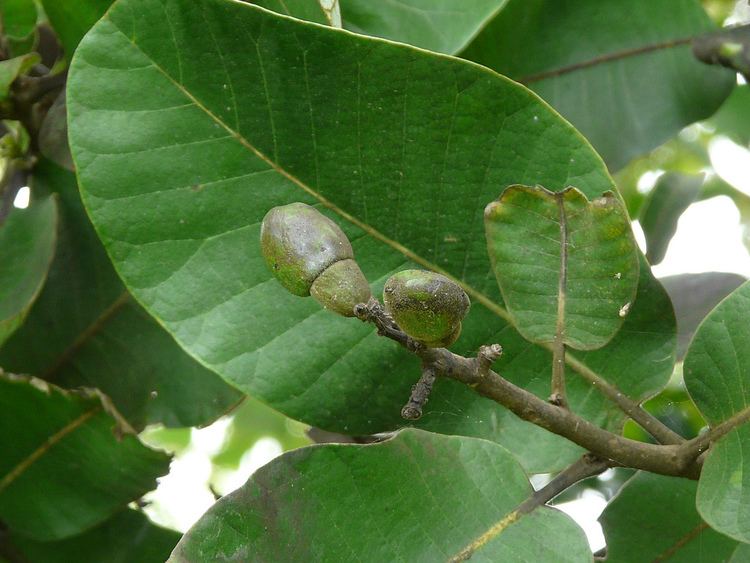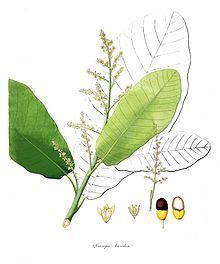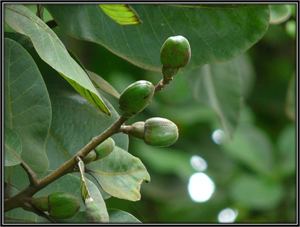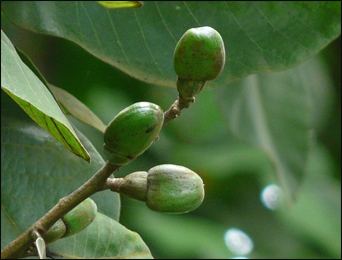Genus Semecarpus Rank Species | ||
 | ||
Similar Anacardium, Semecarpus, Strychnos ignatii, Embelia ribes, Strychnine tree | ||
Detoxification of semecarpus anacardium l medicinal plant by paras jain and singh pallavi
Semecarpus anacardium (Hindi: भिलावा, Nepali:भलायो,Tibetan:གོ་བྱེ། Sanskrit: अग्निमुख) is a native of India, found in the outer Himalayas to Coromandel Coast. It is closely related to the cashew.
Contents
- Detoxification of semecarpus anacardium l medicinal plant by paras jain and singh pallavi
- Marking nut semecarpus anacardium bibbaa
- Etymology
- Plant and fruit features
- Medicinal uses
- Uses
- References

Marking nut semecarpus anacardium bibbaa
Etymology

It is known as Bhallaatak (Hindi: भल्लातक) in India and was called "marking nut" by Europeans, because it was used by washermen to mark cloth and clothing before washing, as it imparted a water insoluble mark to the cloth. It is also known as Gudde Geeru (Kannada: ಗುಡ್ಡೆ ಗೇರು ಬೀಜ) in Kannada and bibba in Marathi and Jeedi Ginja in Telugu.
Plant and fruit features

It is a deciduous tree. Like the closely related cashew, the fruit is composed of two parts, a reddish-orange accessory fruit and a black drupe that grows at the end. The nut is about 25 millimetres (1 in) long, ovoid and smooth lustrous black. The accessory fruit is edible and sweet when ripe, but the black fruit is toxic and produces a severe allergic reaction if it is consumed or its resin comes in contact with the skin. The seed inside the black fruit, known as godambi (गोडम्बी), is edible when properly prepared.
Medicinal uses

It is used for improving sexual power and increasing sperm count, curing diseases related to digestive system, balancing Kapha dosha (कफ दोष) in body. It is said that, no Kapha dosha remains after it is treated with this fruit. The red-orange part is collected and dried in sun. It is consumed after it is semi dried. If consumed in very large quantity, it is said to induce abortion. In moderation, it is however considered good for female reproductive system.
Uses
Various parts of these plants are commonly used in the Ayurvedic system of medicine for the treatment of various ailments, mainly alimentary tract and certain dermatological conditions. Reports have shown noticeable impact on illnesses related to the heart, blood pressure, respiration, cancer and neurological disorders [8-10] The seed inside the samecarpus anacardium is known as "Godambi" in Hindi and is widely used in India as dry fruit. Godambi is eaten by Indians in winter and was commonly used as a method of birth control for women.
